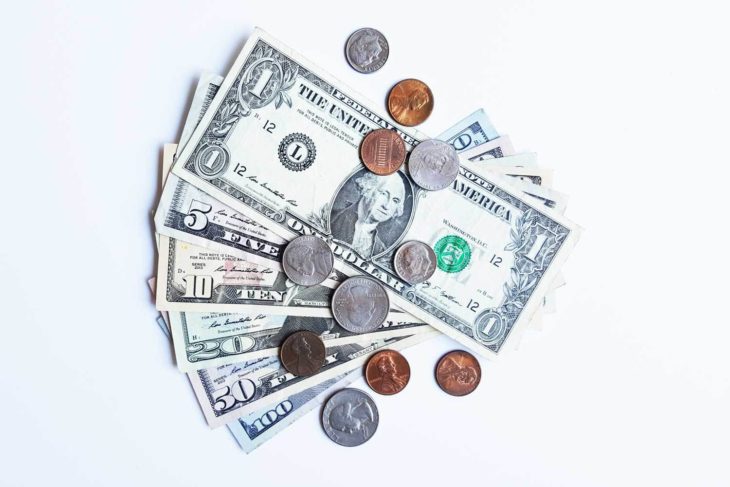Come payday, it’s easy to feel good about your bank account balance. With a sudden influx of cash in your pocket, things are looking up. But then something happens. All that cash disappears, and you’re left with a lot less money in your account than you think you should.
If you aren’t sure where your money is going each month, you need a zero-sum budget.
Contents
What is Zero-Sum Budgeting?

Source: PCWorld
The basic idea behind this budget is this easy equation:
Income – Outgoing Cash = 0
But stop — put down your credit card and close that Amazon tab. This doesn’t give you free rein to spend as much as you can on fun things in the race to arrive at zero.
The goal of a zero-sum budget isn’t to have zero dollars left in your bank account; you just want to have zero left in your budget.
To put it succinctly, you have to assign each dollar a task, so that there isn’t any money leftover at the end of each month.
This will force you to reconsider your relationship with your money. You’ll have to think about the way you spend every dollar carefully with the intention to:
- make the most out of your income
- eliminate wasteful spending habits
Think of it this way: if every dollar must have a job to do, it only makes sense that the job it does improves your financial stability — not fill your closet with new clothes or your belly with costly takeout.

Source: Southern Momdays
What purpose you assign each dollar will depend on your goals and financial situation, but most financial advisors recommend giving it a practical use like an emergency fund — one of the most important financial tools you can have.
It may take you a while before you reach zero — and even longer before you can start contributing to an emergency fund. But eventually, you’ll have savings.
Until then, you can turn to online installment loans in an emergency. Speed and convenience are the two biggest benefits of getting an online personal loan. Sometimes, you can receive your cash after one business day, making online installment loans a practical option when an urgent bill or repair requires immediate payment. If you’re looking for new options to borrow money, click here to learn about new alternatives.
How Do You Make a Zero-Sum Budget?

Source: Forbes
This budgeting method starts like most others. Before you can start living the zero-sum life, you need to spend time with your finances.
Devote an evening or weekend to going over these six steps:
1. Look at your finances
You’ll want to look back at least three months, so you can have a better idea of how you’re spending your money over time. If you use credit or debit for most things, your job is easy. All you have to do is go through your statements to see each purchase. If you use cash, you’ll have to start saving receipts and make note of how you spend every cent.
2. Group spending into categories
Once you have a list of all your expenses for the past three months, you’ll then want to group them into categories. The most common categories are housing, groceries, transportation, takeout, and entertainment, but yours might look different. Don’t overlook anything — you need to give equal attention to irregular expenses and recurring payments.
3. Tally up your categories
Now that you’ve grouped purchases together, it’s time to calculate how much you’re spending in each of these categories. The final tally might surprise you — and we’re not talking about much you spend on rent! Once you add every coffee, vending machine snack, and carryout dish to your food category, you’ll see just how much money you’re wasting on the non-essentials.
4. Make a new tally
Just because you’re spending far too much on takeout, entertainment, or some other category doesn’t mean you’re stuck paying that much each month. This next step is here to help you set a new spending goal for each category. Make it so that it’s restrictive without being impractical. After all, you can’t expect to lower how much you pay in rent without first moving to a new part of town. You can, however, reduce how much you intend to spend on takeout with much less fuss.
5. Compare these new figures to your income

Source: The Savvy Couple
Now that you have your spending goals for each category compare them to how much you bring in each month. Ideally, you’ll want to make more than you spend. If you’re spending more than you earn, then you need to revisit your categories to see how you can cut out more expenses.
6. Achieve zero
By spending less than you earn, you’ll have a surplus of cash in your budget. Don’t let this sit in your bank account without purpose. This is when you need to start assigning new tasks to this money to reach a zero sum. For example, let’s say you have $300 leftover after everything. You can put that $150 towards your personal loan and $150 towards an emergency fund.
A zero-sum budget won’t be easy. It’s hard to fess up to your worst spending habits and take ownership of your finances. But once you do, you’ll have a better chance of getting your spending under control. Not only will you be able to say for certain where your money goes each month, but you’ll also know it’s going to important things.
